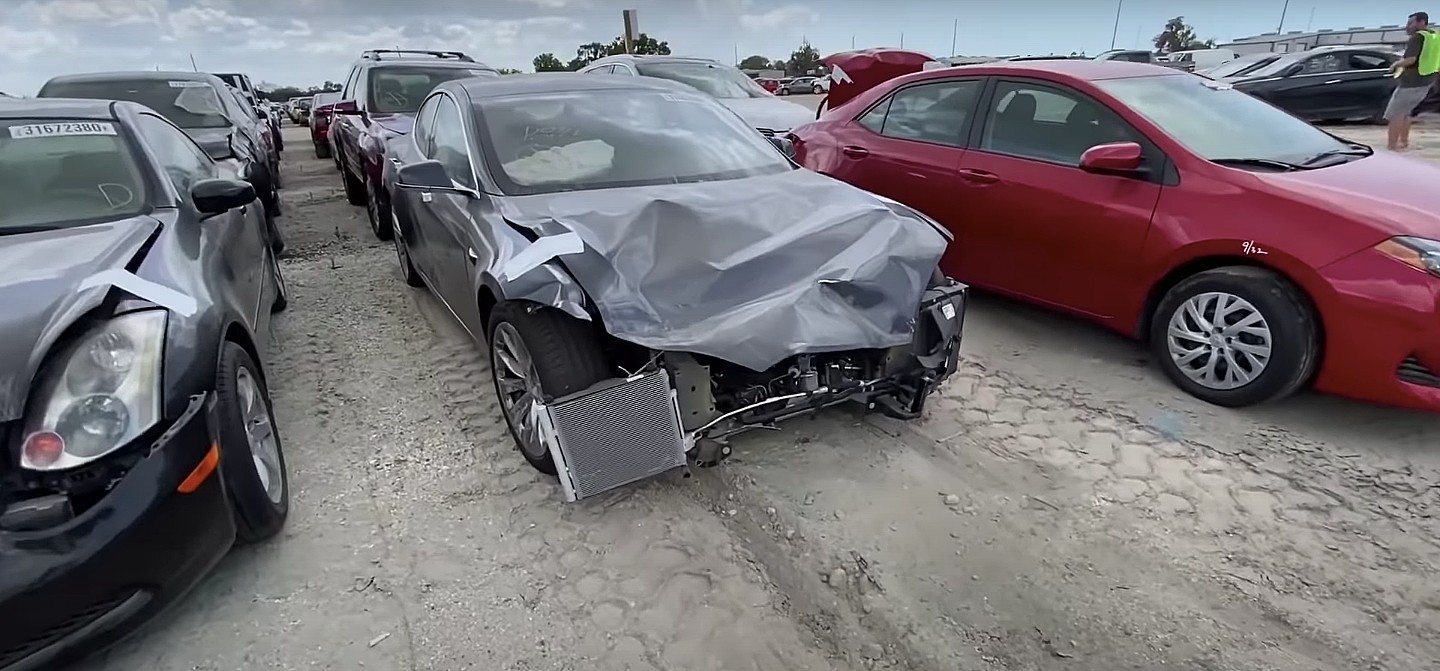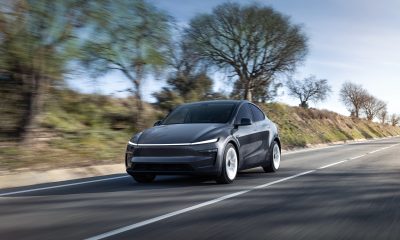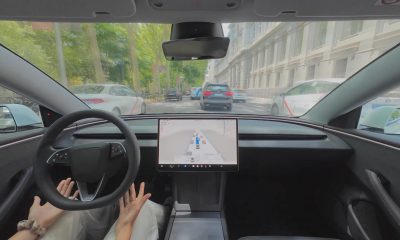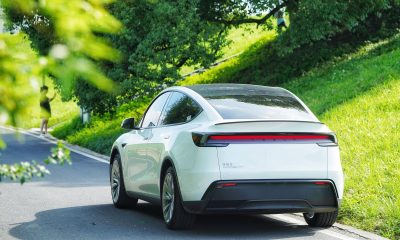Tesla’s salvaged vehicles make for an excellent project for rebuilders, or a chance to have an industry-leading electric car for a discounted price. Some members of the community have even made the act of rebuilding wrecked or damaged Teslas a career, like Rich Rebuilds, who runs a prominent YouTube channel. However, Tesla stopped allowing Supercharging on their salvaged vehicles in February 2020. This move ended fast charging capabilities for the owners of wrecked and refurbished Teslas, but now rebuilders are reporting that the electric vehicle company is taking away more functions.
We received a tip from a Tesla salvager who says the company is now refusing to update ownership records, nor will it activate the smartphone application, which enables some functions for the electric vehicle in question. However, Tesla has a reason for doing this, and it has to do with revenue and passenger safety, which is something the company is under a microscope for from its harshest critics.
But the real reason we are talking about it this week is because there is a valid argument for both points of view, and both should be examined in an open platform. When you decide which side you are on, please e-mail me and let me know your thoughts.
First, let’s look at the side of the salvagers. They have a few main points on why taking away vehicle privileges is wrong. One issue is the fact that salvaged Teslas, if not repaired and resold, will end up sitting in a landfill for basically the remainder of the time.
It is a shame that a car that is capable of repair could end up in a landfill to sit and rot away for the rest of time. Not only is it a waste of space, but its a waste of a perfectly good high-performance vehicle. Not to mention, project cars are a hobby and a career for some. Eliminating the possibility of preparing or working on a Tesla electric vehicle to bring it back to life reduces the industry of bringing the cars back to life.
Next, the revitalization of these salvaged vehicles creates an opportunity for a more affordable Tesla ownership experience for some. Rebuilding vehicles creates profit for the person responsible for bringing the car back to a driveable state. At the same time, the owner can sometimes receive a discounted price on a perfectly drivable vehicle that could have low miles.
The industry of rebuilding crashed, or damaged cars are advantageous for multiple parties financially. The issue is the cars are not always repaired by mechanics properly, which can lead to quality and safety issues down the line. However, this could be another opportunity for Tesla to train salvagers, mechanics, and collision repair technicians across the world. The idea of making repair seminars or courses available for those who plan to revitalize a Tesla vehicle could lead to an influx of people who are familiar with the cars inside and out.
To the flip side, Tesla’s arguments are just as reliable as those of the rebuilders. Tesla has maintained a reputation for having extremely safe vehicles that are capable of saving people from severe injuries when they are involved in scary and violent accidents. When cars are damaged and end up in salvage yards, ending up in the hands of those who are interested in repairing them, they are never really the same. The most severely damaged cars can have chassis and build issues that can never be fixed fully, only masked, and pushed as close to perfect as possible. They’ll never be “factory issue,” and they’ll never drive precisely how they would when they rolled out of a production facility. However, they can be fabricated, rewelded, and adjusted to specifications that are incredibly close to how Tesla intended them to be. But this is a case that would require the individual inspection of each repaired vehicle by a Tesla representative. With 1,000,000 Tesla vehicles manufactured in the company’s history, this would be near impossible, even if .01% of them were salvaged and repaired.
The likelihood of a Tesla rep traveling to the location of a rebuilt vehicle and going through hours of inspection: making sure all parts of the car are correctly installed, properly connected, and aligned safely would not be cost-effective, smart, or worth Tesla’s time. However, it would be necessary. Like I said before, this company has a reputation for building safe cars. When someone in a Tesla gets in an accident, the short sellers and the Elon haters come out of the woodwork looking for answers. Why? So if someone got hurt, or heaven forbid, killed in an accident, they could use it as justification that the cars are not as safe as Tesla advertises, and somehow that means Elon is a fraud.
It is a ridiculous train of thought. I’ll never understand Tesla’s short-sellers celebrating other people’s injuries. Instead of rooting for someone to get hurt, why not root for the company to make safer cars? It would only make other automakers want to match Tesla’s quality, and it wouldn’t be such a horrible thing to have more safe vehicles on the road.
Regardless, Tesla has to account for the fact that if someone gets hurt in a revitalized vehicle that was formerly a salvage, it will be a never-ending storm of media harassment. I can see the misleading headlines now…”Driver killed in Tesla proving cars aren’t so safe after all,” or something to that effect. It is a risk that they simply cannot take, and it is not worth the company’s future.
Additionally, Tesla makes money when they sell new cars, not when people buy wrecked ones and decide to rebuild them. Let’s not forget, this is a car company, and ultimately a business. While Tesla’s mission is to provide people with safe and affordable electric vehicles that benefit our environment and our well-being, they need to make money.
In the end, Tesla’s decision, while financial, is also a safety issue. Sure, Elon would love to see some custom projects. I’d bet he would like to see his cars developed into something different than what Tesla builds in their factories. But I also bet that he wouldn’t want someone to get hurt or killed as a result of negligence while refurbishing a vehicle. Ultimately, it would end up being blood on his hands, and this risk makes it entirely too risky from a business standpoint.
While people are still free to rebuild the cars, they will undoubtedly run into roadblocks—no Supercharging, issues with transferring ownership titles, so on and so forth. Tesla is doing it for money, but it is also doing it for safety. In the big picture, that’s why I think what they are doing is okay, even though I feel for the rebuilders.
Welcome to a FREE preview of our weekly newsletter. Each week I go ‘Beyond the News’ and handcraft a special edition that includes my thoughts on the biggest stories, why it matters, and how it could impact the future.
A big thanks to our long-time supporters and new subscribers! Thank you.
Elon Musk
X account with 184 followers inadvertently saves US space program amid Musk-Trump row
Needless to say, the X user has far more than 184 followers today after his level-headed feat.
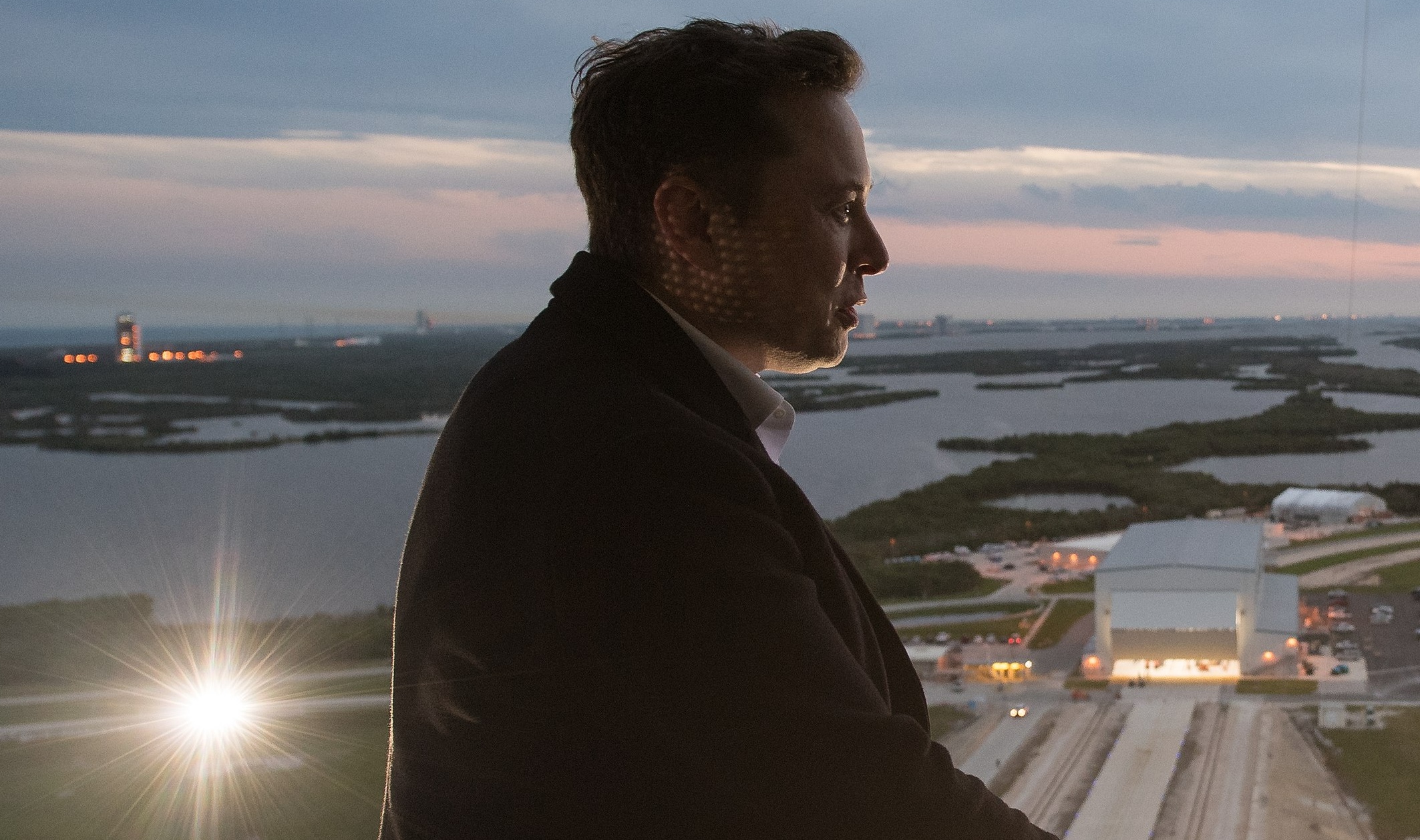
An X user with 184 followers has become the unlikely hero of the United States’ space program by effectively de-escalating a row between SpaceX CEO Elon Musk and President Donald Trump on social media.
Needless to say, the X user has far more than 184 followers today after his level-headed feat.
A Near Fall
During Elon Musk and Donald Trump’s fallout last week, the U.S. President stated in a post on Truth Social that a good way for the United States government to save money would be to terminate subsidies and contracts from the CEO’s companies. Musk responded to Trump’s post by stating that SpaceX will start decommissioning its Dragon spacecraft immediately.
Musk’s comment was received with shock among the space community, partly because the U.S. space program is currently reliant on SpaceX to send supplies and astronauts to the International Space Station (ISS). Without Dragon, the United States will likely have to utilize Russia’s Soyuz for the same services—at a significantly higher price.
X User to the Rescue
It was evident among X users that Musk’s comments about Dragon being decommissioned were posted while emotions were high. It was then no surprise that an X account with 184 followers, @Fab25june, commented on Musk’s post, urging the CEO to rethink his decision. “This is a shame this back and forth. You are both better than this. Cool off and take a step back for a couple days,” the X user wrote in a reply.
Much to the social media platform’s surprise, Musk responded to the user. Even more surprising, the CEO stated that SpaceX would not be decommissioning Dragon after all. “Good advice. Ok, we won’t decommission Dragon,” Musk wrote in a post on X.
Not Planned, But Welcomed
The X user’s comment and Musk’s response were received extremely well by social media users, many of whom noted that @Fab25june’s X comment effectively saved the U.S. space program. In a follow-up comment, the X user, who has over 9,100 followers as of writing, stated that he did not really plan on being a mediator between Musk and Trump.
“Elon Musk replied to me. Somehow, I became the accidental peace broker between two billionaires. I didn’t plan this. I was just being me. Two great minds can do wonders. Sometimes, all it takes is a breather. Grateful for every like, DM, and new follow. Life’s weird. The internet’s weirder. Let’s ride. (Manifesting peace… and maybe a Model Y.)” the X user wrote.
Lifestyle
Tesla Cybertruck takes a bump from epic failing Dodge Charger
The Cybertruck seemed unharmed by the charging Charger.
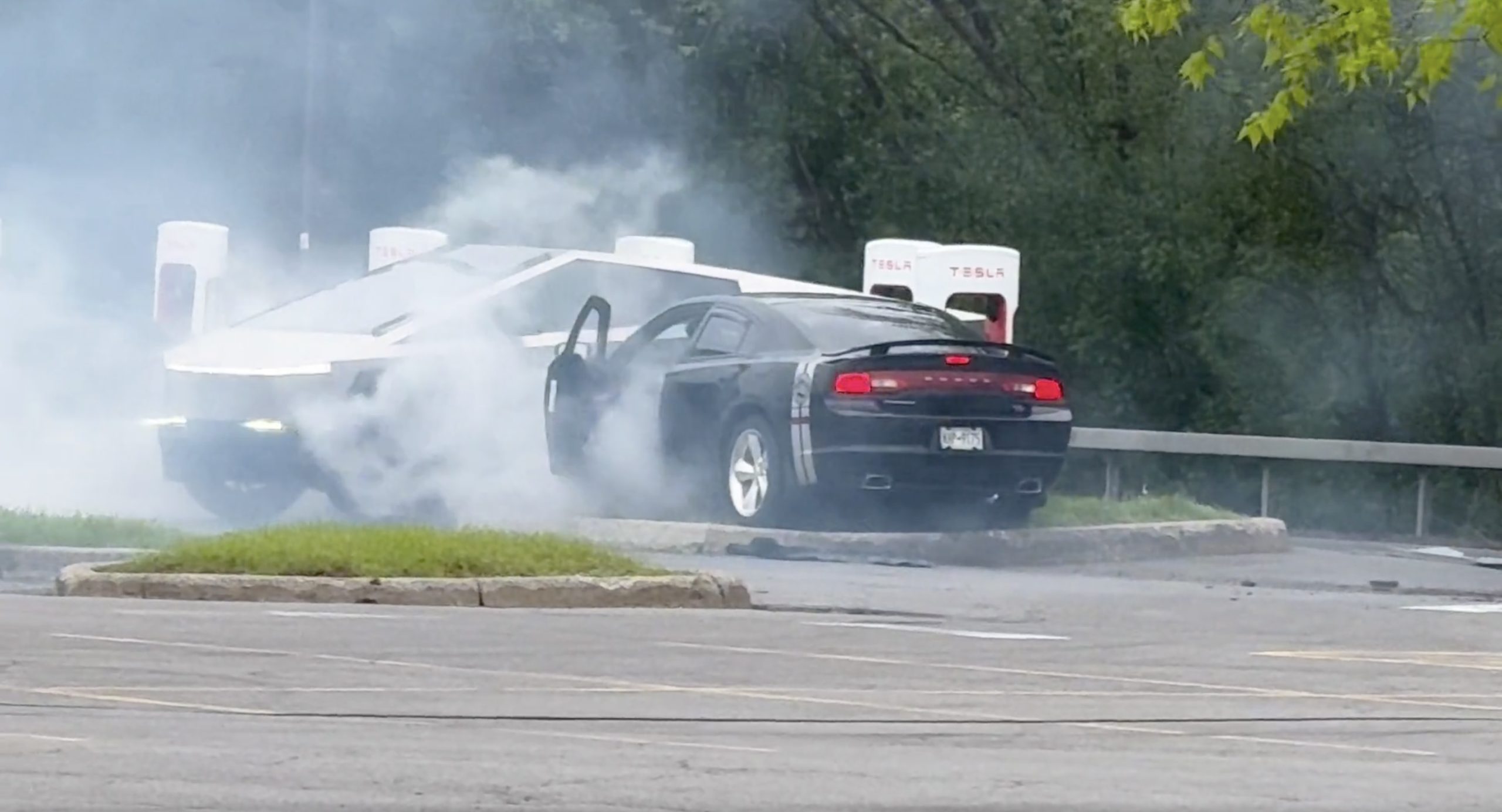
There comes a time in a driver’s life when one is faced with one’s limitations. For the driver of a Dodge Charger, this time came when he lost control and crashed into a Tesla Cybertruck–an absolute epic fail.
A video of the rather unfortunate incident was shared on the r/TeslaLounge subreddit.
Charging Charger Fails
As could be seen in the video, which was posted on the subreddit by Model Y owner u/Hammer_of_something, a group of teens in a Dodge Charger decided to do some burnouts at a Tesla Supercharger. Unfortunately, the driver of the Charger failed in his burnout or donut attempt, resulting in the mopar sedan going over a curb and bumping a charging Cybertruck.
Ironically, the Dodge Charger seemed to have been parked at a Supercharger stall before its driver decided to perform the failed stunt. This suggests that the vehicle was likely ICE-ing a charging stall before it had its epic fail moment. Amusingly enough, the subreddit member noted that the Cybertruck did not seem like it took any damage at all despite its bump. The Charger, however, seemed like it ran into some trouble after crashing into the truck.
Alleged Aftermath
As per the the r/TeslaLounge subreddit member, the Cybertruck owner came rushing out to his vehicle after the Dodge Charger crashed into it. The Model Y owner then sent over the full video of the incident, which clearly showed the Charger attempting a burnout, failing, and bumping into the Cybertruck. The Cybertruck owner likely appreciated the video, in part because it showed the driver of the Dodge Charger absolutely freaking out after the incident.
The Cybertruck is not an impregnable vehicle, but it can take bumps pretty well thanks to its thick stainless steel body. Based on this video, it appears that the Cybertruck can even take bumps from a charging Charger, all while chilling and charging at a Supercharger. As for the teens in the Dodge, they likely had to provide a long explanation to authorities after the incident, since the cops were called to the location.
Lifestyle
Anti-Elon Musk group crushes Tesla Model 3 with Sherman tank–with unexpected results
Ironically enough, the group’s video ended up highlighting something very positive for Tesla.
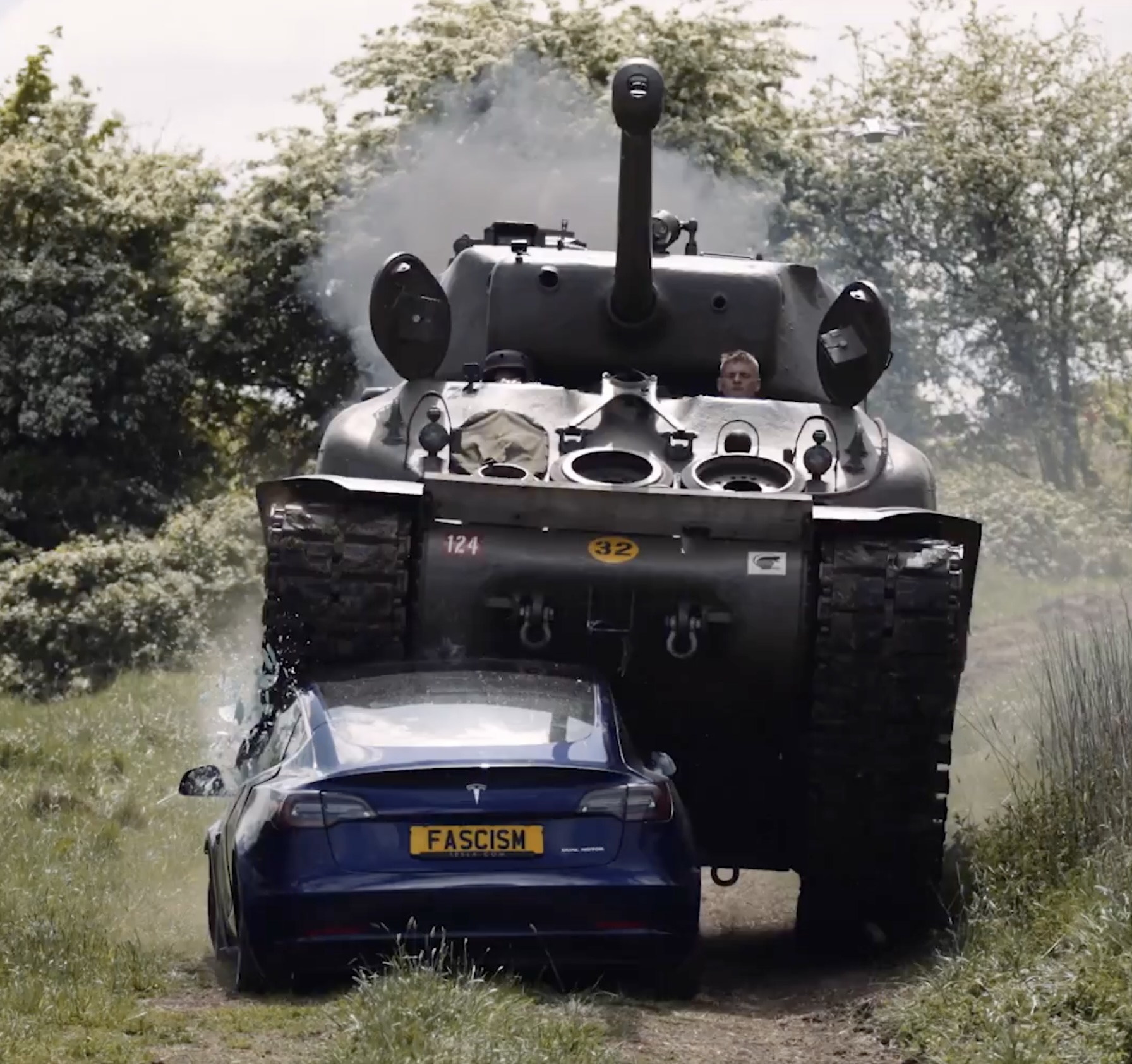
Anti-Elon Musk protesters and critics tend to show their disdain for the CEO in various ways, but a recent video from political action group Led By Donkeys definitely takes the cake when it comes to creativity.
Ironially enough, the group’s video also ended up highlighting something very positive for Tesla.
Tank vs. Tesla
In its video, Led By Donkeys featured Ken Turner, a 98-year-old veteran who served in the British army during World War II. The veteran stated that Elon Musk, the richest man in the world, is “using his immense power to support the far-right in Europe, and his money comes from Tesla cars.”
He also noted that he had a message for the Tesla CEO: “We’ve crushed fascism before and we’ll crush it again.” To emphasize his point, the veteran proceeded to drive a Sherman tank over a blue Tesla Model 3 sedan, which, of course, had a plate that read “Fascism.”
The heavy tank crushed the Model 3’s glass roof and windows, much to the delight of Led By Donkeys’ commenters on its official YouTube channel. But at the end of it all, the aftermath of the anti-Elon Musk demonstration ended up showcasing something positive for the electric vehicle maker.
Tesla Model 3 Tanks the Tank?
As could be seen from the wreckage of the Tesla Model 3 after its Sherman encounter, only the glass roof and windows of the all-electric sedan were crushed. Looking at the wreckage of the Model 3, it seemed like its doors could still be opened, and everything on its lower section looked intact.
Considering that a standard M4 Sherman weighs about 66,800 to 84,000 pounds, the Model 3 actually weathered the tank’s assault really well. Granted, the vehicle’s suspension height before the political action group’s demonstration suggests that the Model 3’s high voltage battery had been removed beforehand. But even if it hadn’t been taken off, it seemed like the vehicle’s battery would have survived the heavy ordeal without much incident.
This was highlighted in comments from users on social media platform X, many of whom noted that a person in the Model 3 could very well have survived the ordeal with the Sherman. And that, ultimately, just speaks to the safety of Tesla’s vehicles. There is a reason why Teslas consistently rank among the safest cars on the road, after all.
-

 Elon Musk4 days ago
Elon Musk4 days agoTesla investors will be shocked by Jim Cramer’s latest assessment
-

 News1 week ago
News1 week agoTesla Robotaxi’s biggest challenge seems to be this one thing
-

 Elon Musk2 weeks ago
Elon Musk2 weeks agoFirst Look at Tesla’s Robotaxi App: features, design, and more
-

 News2 weeks ago
News2 weeks agoSpaceX and Elon Musk share insights on Starship Ship 36’s RUD
-

 News2 weeks ago
News2 weeks agoWatch Tesla’s first driverless public Robotaxi rides in Texas
-

 News1 week ago
News1 week agoWatch the first true Tesla Robotaxi intervention by safety monitor
-

 News2 weeks ago
News2 weeks agoTesla has started rolling out initial round of Robotaxi invites
-

 Elon Musk2 weeks ago
Elon Musk2 weeks agoTesla to launch in India in July with vehicles already arriving: report

